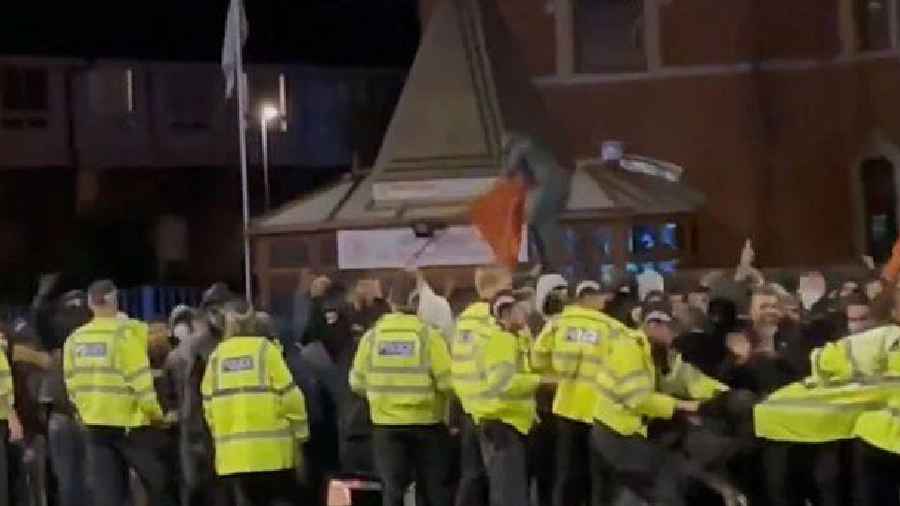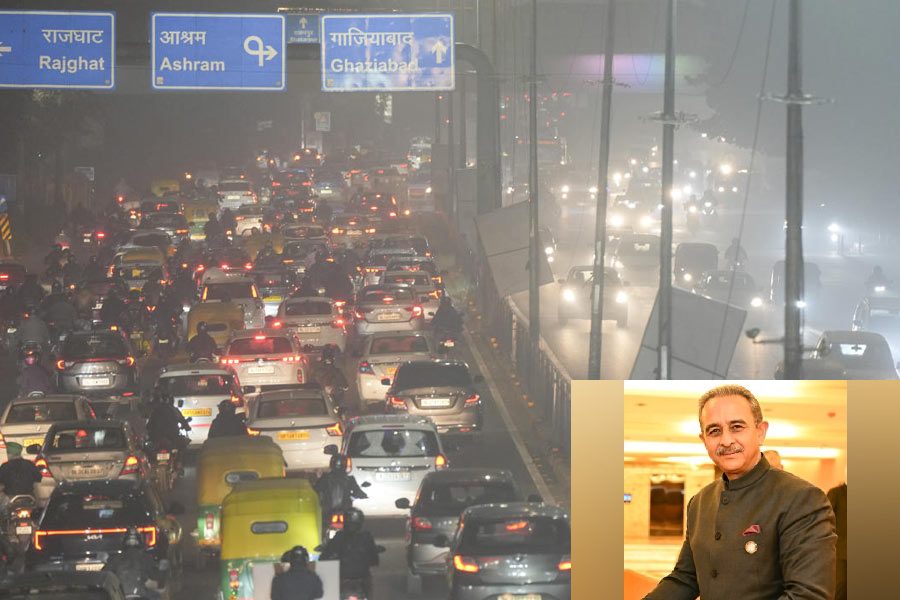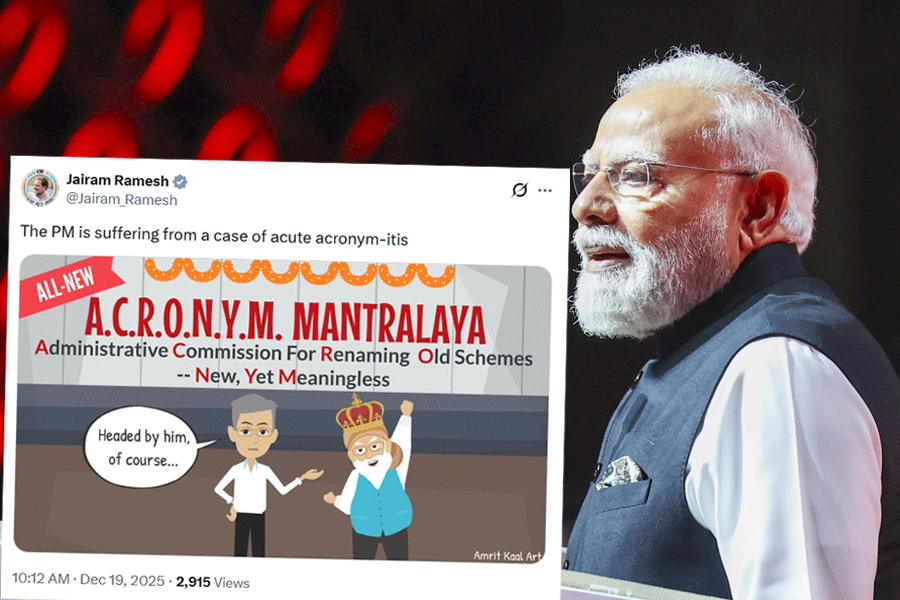In east Leicester, decorations for Diwali hang near a sign advertising a halal butcher. The fish shop down the road is owned by a Muslim Indian family and staffed almost exclusively by Hindus.
Everywhere, there is evidence of a diverse and sizable South Asian community that has called this central English city home, with people from different communities and countries living side by side for decades.
So it was disturbing to many residents there when crowds of mostly Hindu and Muslim men tangled with one another last month on the city’s streets, a confrontation that devolved into brawls and scuffles with the police. One group made up largely of Hindu men chanted anti-Muslim slurs as it pushed toward a mosque. In retaliation, masked men tore down flags outside a Hindu temple.
And rumour and disinformation, with lots of finger-pointing, swirled on social media, further inflaming the situation.
“For me, genuinely, it was heartbreaking, it was really sad,” said Shockat Adam Patel, a Leicester resident and volunteer with MEND, a charity that fights against Islamophobia. “But it wasn’t shocking, unfortunately, because there have been quite a few incidents of friction growing.”
Experts say it is only the latest example of how the toxic politics that is roiling India — and leading to the persecution of Muslims, Christians and other religious minorities — have migrated to other parts of the globe.
Across the Indian diaspora, ugly divisions are emerging. A bulldozer, which has become a symbol of oppression against India’s Muslim minority, was rolled down a street in a New Jersey town during a parade this summer, offending many people. Last year, attacks on Sikh men in Australia were linked to extremist nationalist ideology. In April, Canadian academics told CBC News that they faced death threats over their criticism of growing Hindu nationalism and violence against minorities in India.
Since India’s Independence struggle, Hindu nationalists have espoused a vision that places Hindu culture and religious worship at the centre of Indian identity. That view, once fringe, was made mainstream when Prime Minister Narendra Modi’s BJP came to power.
Human rights observers have since documented a sharp rise in violence against minorities in India, particularly targeting Muslims, but also Christians. Activists and journalists, including many Muslims, have been jailed or threatened with prosecution under an anti-terrorism law that has received scrutiny from the Supreme Court.
Modi has largely responded to this violence with silence, which experts say his most extreme supporters interpret as a tacit sign of approval. Pratap Bhanu Mehta, a prominent public intellectual, last month wrote that the Leicester episode followed a playbook “familiar for anyone who knows Indian riots: The use of rumours, groups from outside the local community, and marches to create polarisation in otherwise peaceful communities”.
The tensions that spilled onto the streets last month have prompted soul searching among the different religious communities in Leicester, a city of about 368,000 in England’s Midlands. Leicester has one of Britain’s highest proportions of South Asians, a vast majority of them people of Indian heritage, who make up some 22.3 per cent of the city’s overall population, according to the most recent government statistics.
Leicester is 13 per cent Muslim and 12.3 per cent Hindu, and most of the people from both religious groups are ethnically Indian.
After British rule ended with the partition of India in 1947, creating a separate state of Pakistan, subsequent legislation allowed citizens from across the Commonwealth to move to Britain. Another wave of South Asians arrived in the 1970s after Uganda’s dictator, Idi Amin, suddenly expelled thousands of people of mostly Indian origin from Uganda. By then, Leicester had gained a reputation as a city that was generally welcoming to immigrants.
“Leicester has always been proud of the fact that we have new people coming from all parts of the world,” said Rita Patel, a local councillor and member of a South Asian women’s collective working toward peace-building.
But over the past decade, local services for young people have been hollowed out by austerity measures, and the coronavirus disproportionately affected the area. More recently, the cost-of-living crisis aggravated economic inequality, Patel said.
“When you look back in hindsight, you can see that the warning signs were there,” she said. “I think at a time when people are just struggling to survive, they are vulnerable to all sorts of things. And I do think other cities need to be careful. I think this is a wake-up call for all of us.”
Leaders from all sides agreed that the growing disenfranchisement among young people in Leicester’s South Asian community could become kindling for extremist views to take root.
Fatima Rajina, a sociologist who researches British Muslims, said the clashes in Leicester reflected a spread of sometimes violent extremism across the broader Indian diaspora driven by Hindutva, the divisive political ideology that has been endorsed by the BJP.
“You will not understand the events of Leicester if you do not pay attention to what’s been happening in India and how Hindutva has been playing out across the diaspora,” she said, and pointed to other scholars like Amrit Wilson who have long documented the phenomenon.
Human rights observers have said that many levels of the Indian government discriminate against non-Hindus. After the Leicester troubles, India’s high commission in London issued a statement condemning the “vandalisation of premises and symbols of Hindu religion” but made no mention of the violence also targeting Muslims.
People in Leicester paint a complex picture of deteriorating community relations. Majid Freeman, a Muslim activist who was on the streets the night the situation devolved into violence, said it was important to understand the chronology of events.
Messages had swirled online after a group attacked a young Muslim man in May, asking him to state his religion before beating him. A Sikh man was later also attacked in the city.
By the time of an India vs Pakistan cricket match in August — long a heated rivalry — tensions were high, driven in part by rumours on social media and in messaging apps.
Then on September 17, more than 300 people, mostly Hindu, gathered for an unplanned demonstration, the police said, which pushed towards the city’s Green Lane Road, an area with a large Muslim population. Some people chanted “Jai Shri Ram”, a phrase that has increasingly been appropriated by those inciting violence against Muslims.
Soon, a counter-protest formed, another group gathered outside a temple, and scuffles broke out. Bottles were thrown, and people were injured as the unrest stretched into the early hours of the next morning.
Some 47 people were arrested, according to the police.
Since then, patrols have been stepped up in the city’s eastern neighbourhoods. The British government has ordered an independent review into the unrest. Hindu and Muslim religious leaders issued a statement of unity condemning the violence.
In a collective statement, the leaders of Leicester’s temples said they were “appalled” by the scenes that had unfolded in Leicester and that Hindu leaders were “not going to tolerate such acts of aggression that undermines the relationships and unity within this city”.
In the Golden Mile, an area known for its numerous jewellery shops, people were preparing for the start of the festive season, with Navratri celebration beginning in late September.
Raken Chudasama, 54, who has owned a craft and decorations shop on the road for the past two decades, said he was surprised to see the street scuffles after years of peace and cooperation between neighbours. He has also noticed an increased police presence in recent days.
“When you speak to customers, they are worried about what will happen,” he said. But he said it was important not to give in to the fear.
Amir Ahmed, a lawyer who was born and raised in Leicester and who volunteers with Muslim youth, said Leicester had long been seen as “a sort of poster child for multiculturalism”.
But the nervousness is still palpable, and he worries that it could taint Leicester’s harmonious image.
“With my Hindu neighbours who live next door to me, we’ve never had a problem,” he said. “I was speaking to them, and they feel the same way as we do,” he said.
For now, community and faith leaders in Leicester and across Britain want to ensure that this kind of violence does not happen again.
Freeman, the Muslim activist, said he felt trust in the community was at the lowest point he could remember. “We just want the city to go back to how it was,” he said. “Now everyone is looking over their shoulders.”
(New York Times News Service)












